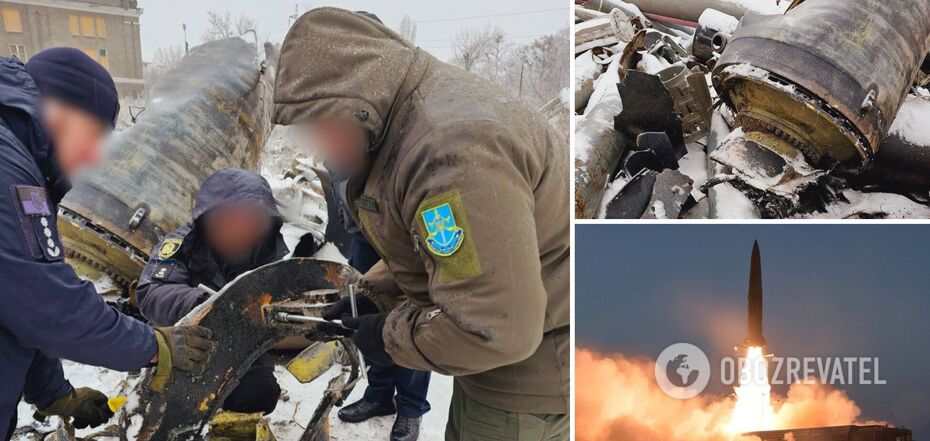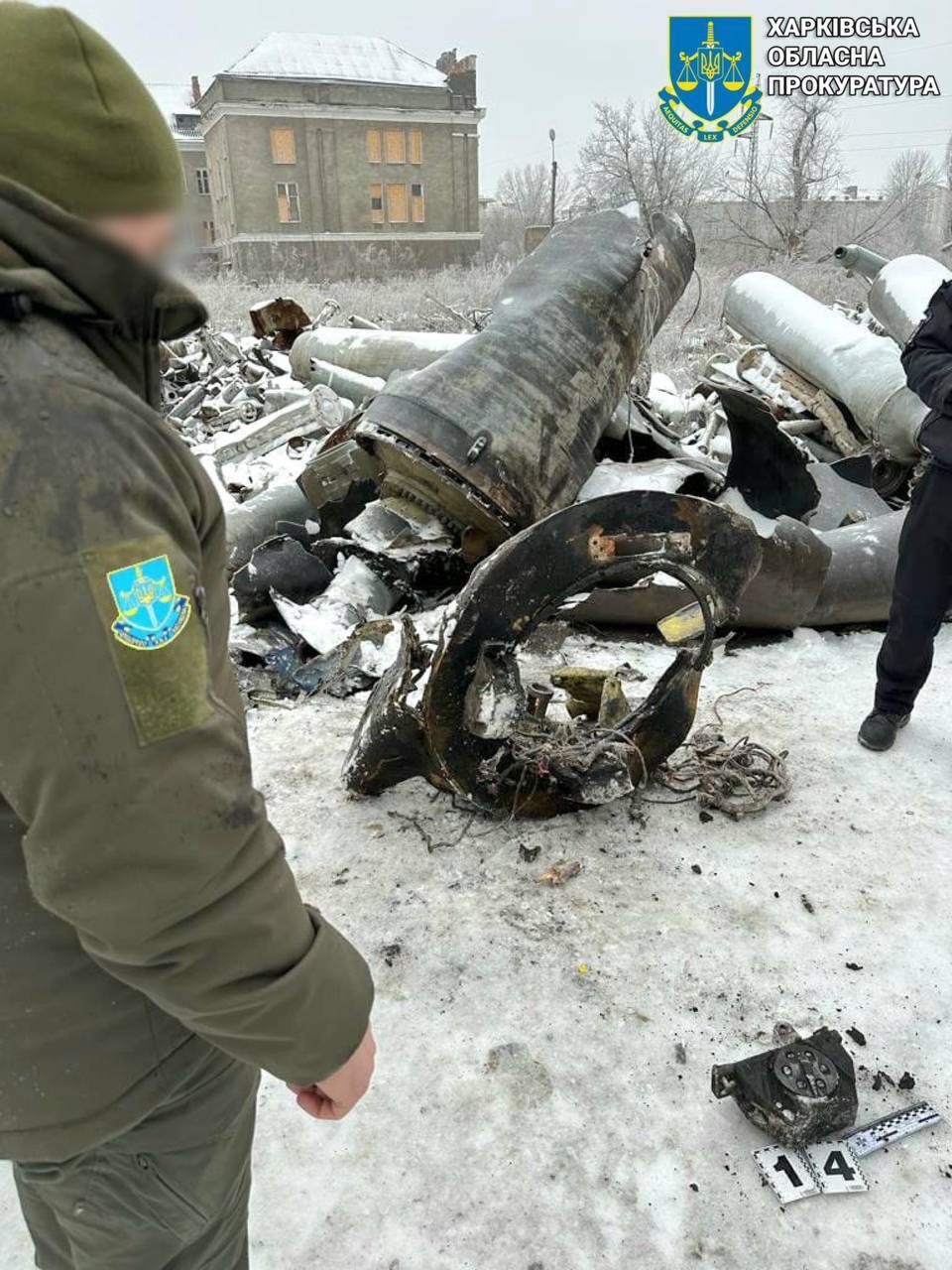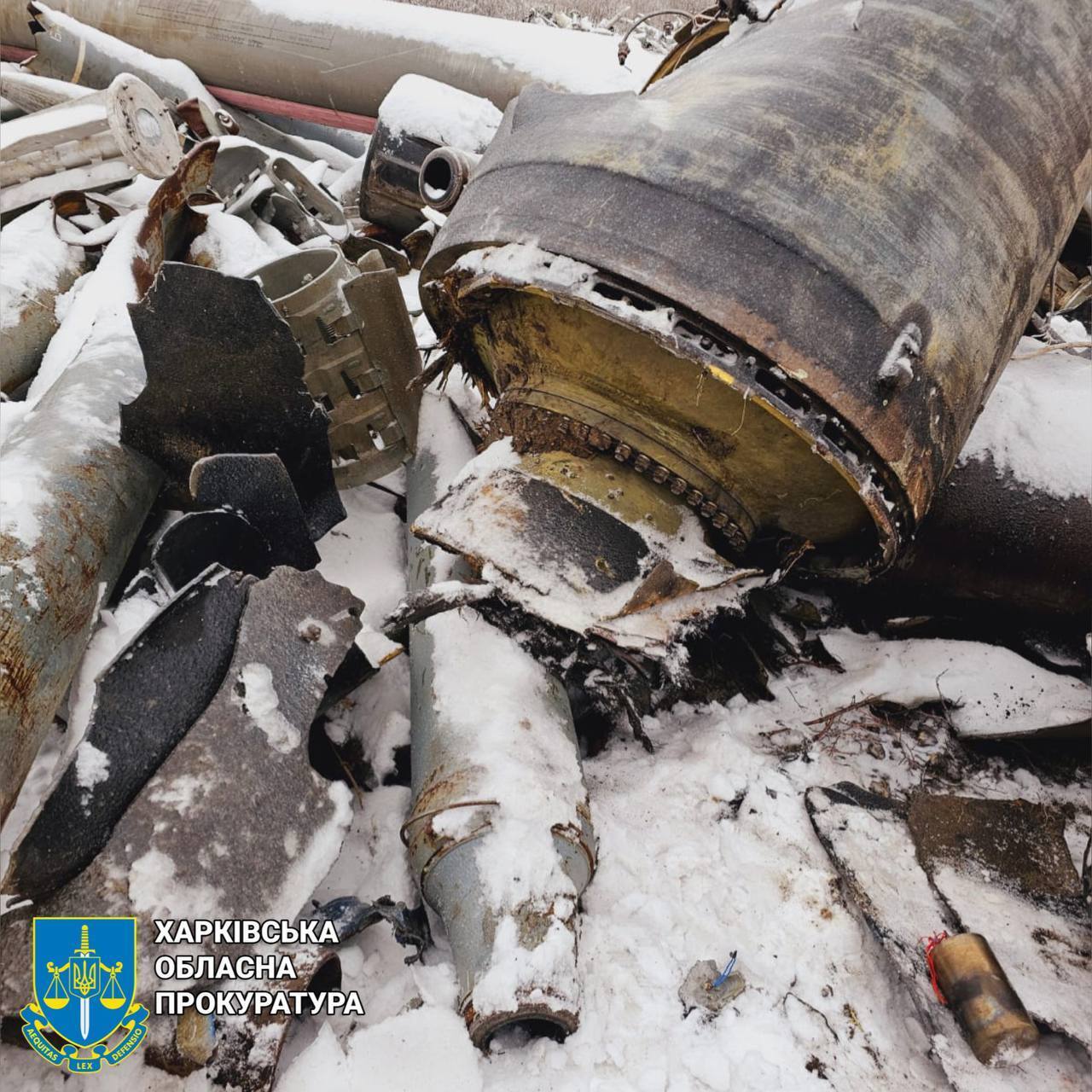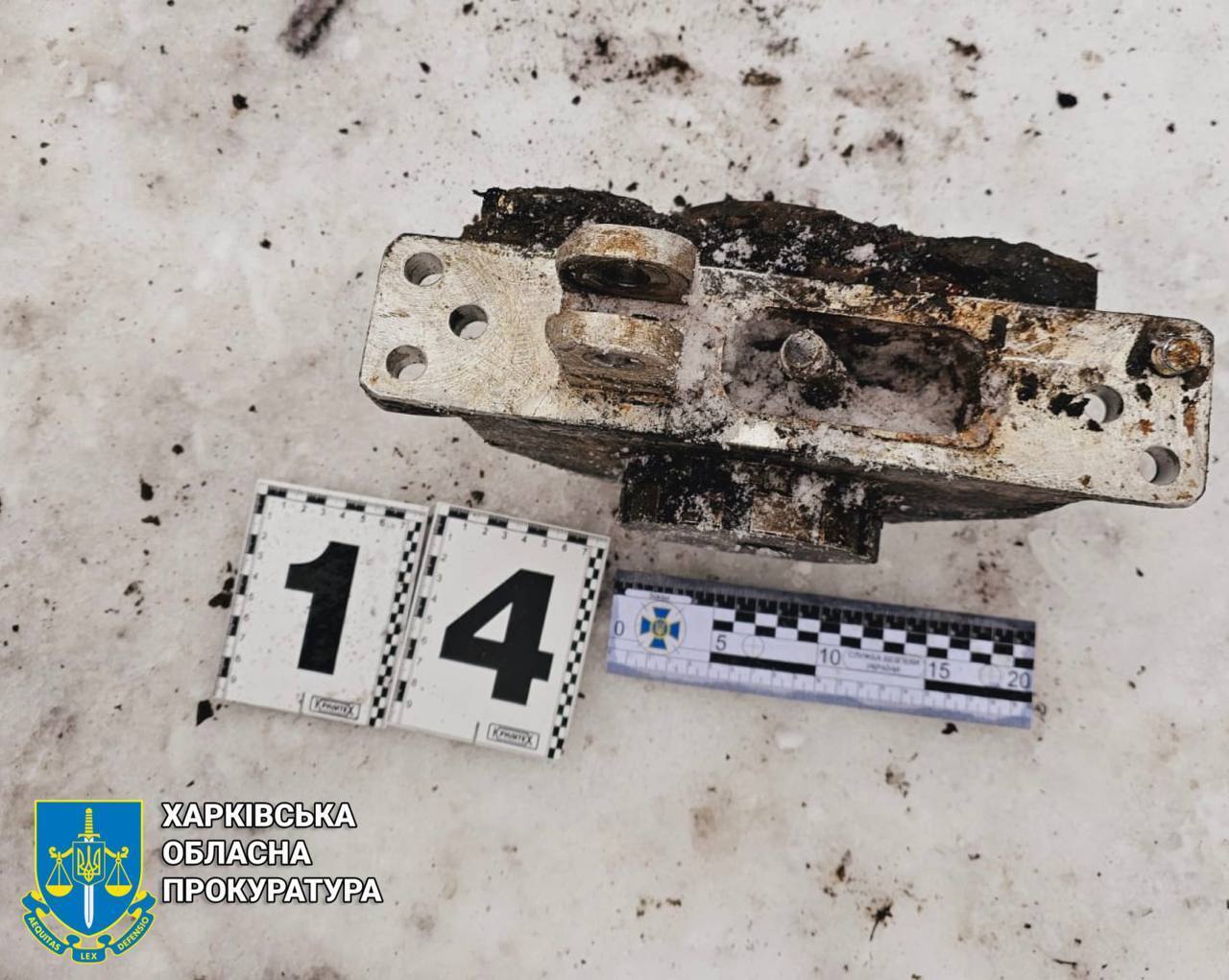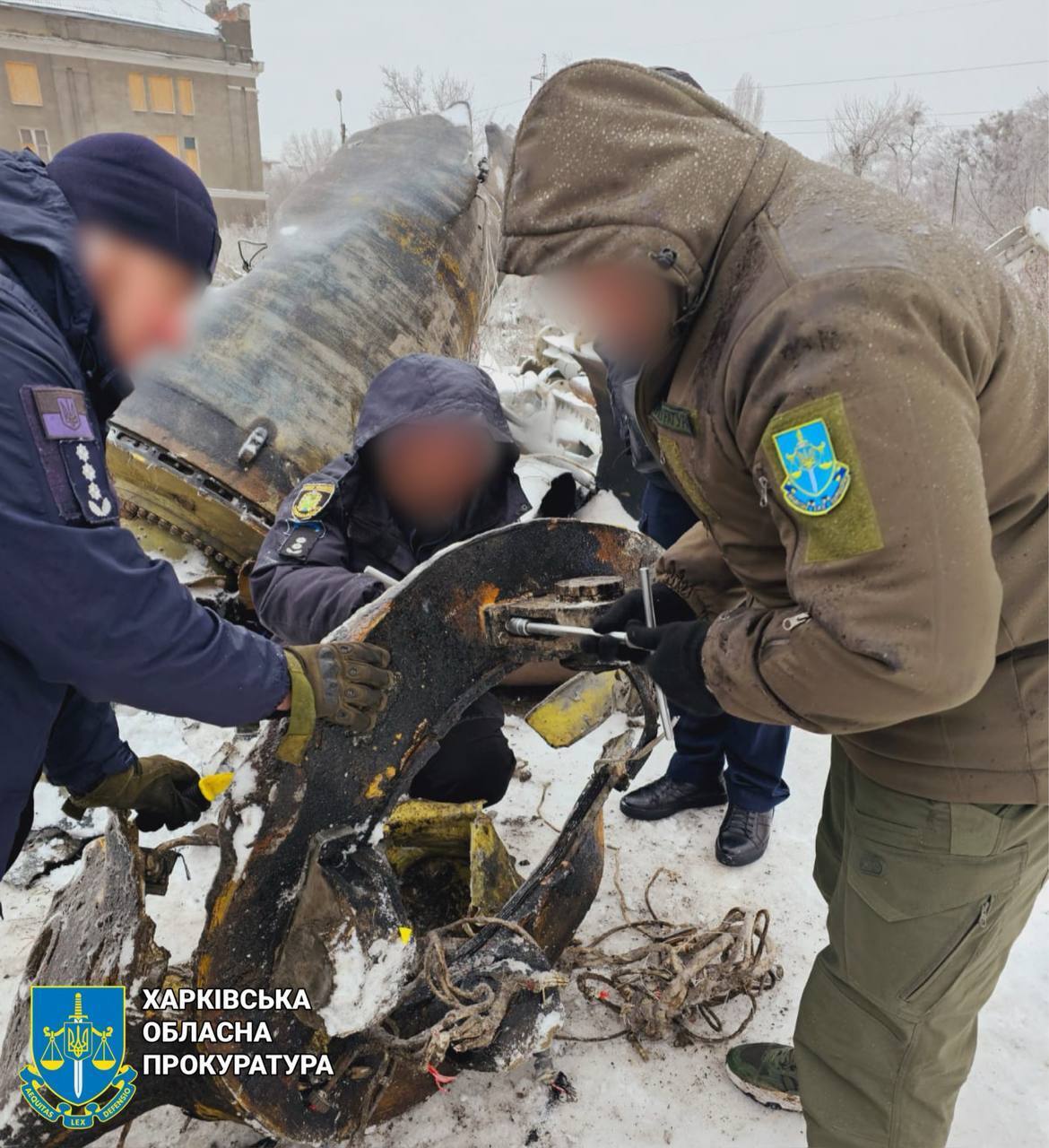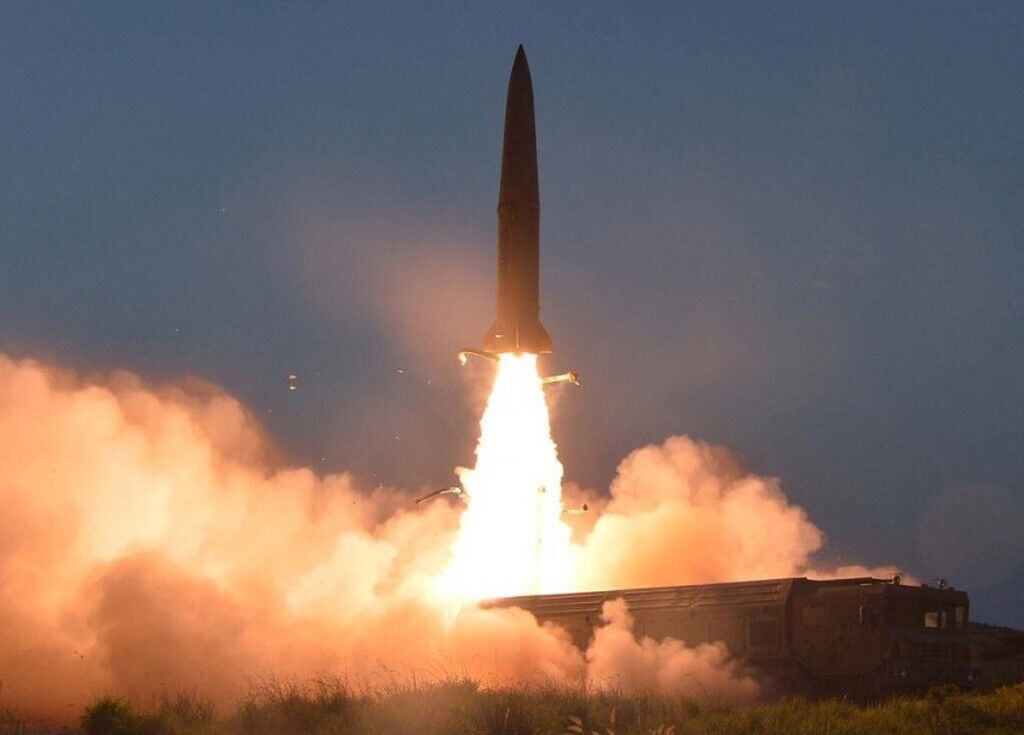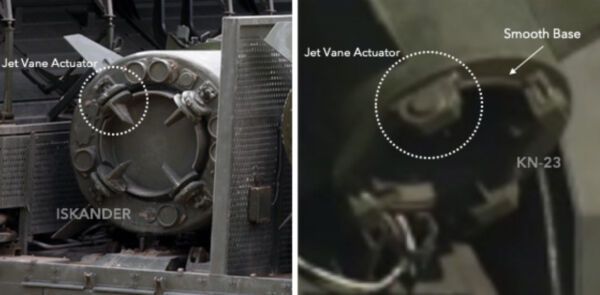War in Ukraine
Russia used a North Korean KN-23 missile to strike Ukraine: what is known
During the attack on Kharkiv on January 2, the Russian Federation used non-Russian-made missiles to strike the city, among other things. The country of manufacture of the missiles, whose markings on the wreckage found at the crash site have been erased, is currently being established.
This was stated by the head of the Kharkiv Regional Military Administration, Oleh Syniehubov, and the Kharkiv Regional Prosecutor's Office. Meanwhile, the team of the Defense Express military portal suggested that the Russians could have hit Kharkiv with ballistic missiles received from North Korea and described the technical characteristics of the most likely means of destruction.
During a briefing on the Russian attack on Kharkiv on January 2, which killed two civilians and injured 62 people, Sinegubov said that fragments of non-Russian-made missiles were found at the sites of the crash. According to him, these are the remains of Iskander-M missiles with carefully erased markings.
"We are now conducting all the necessary research to identify the country of manufacture. I will say in advance that the markings have been erased from these missiles. However, what we can see is that the country of manufacture is not the Russian Federation, so to speak. When we have more precise information from the General Staff, from our intelligence, we will report it immediately," Ukrinform quoted Syniehubov as saying.
Meanwhile, the Kharkiv Regional Prosecutor's Office, following the White House's claims that Moscow used missiles received from the DPRK to attack, conducted an additional examination of the wreckage found in Kharkiv after January 2. According to the regional prosecutor's office, the data obtained during the inspection will be passed on to experts for a comprehensive forensic explosive and military examination.
"The inspection was carried out by prosecutors of the regional prosecutor's office, police investigators, SSU officers and employees of the Air Force Science Center of the Kharkiv National Air Force University named after Ivan Kozhedub. The investigation is ongoing," the Kharkiv Regional Prosecutor's Office said.
The Defense Express team suggested that ballistic missiles from the DPRK were used to attack Zaporizhzhia on December 29 and Kharkiv on January 2. At least in Kharkiv, the newspaper said, citing its own sources, fragments of at least one missile were found: a North Korean KN-23.
"It should be reminded that at the time, it was officially reported that the enemy had used 12 ballistic missiles without specifying the type. And yesterday, on January 4, Washington officially announced that Russia had used missiles from the DPRK, but the type was not specified either. At the same time, this is the second such case, as the White House reported that during an attack on December 29 last year, another North Korean ballistic missile fell into a field near Zaporizhzhia," the military portal said.
The analysts stated that the analysis of the found wreckage is ongoing. However, it can already be assumed that the scale of the explosion was much smaller than the KN-23 with a declared warhead weight of 500 kg should have caused.
In addition, if it was launched in the direction of Zaporizhzhia, experts noted, there are reasons to doubt the accuracy of the ballistic missile, which identified a "target" in the middle of the field.
Defense Express noted that all the data on this missile is based on Pyongyang's statements, as well as on North Korea's radar control data during the DPRK's regular missile tests. There is simply nowhere else to get more information because of North Korea's absolute secrecy from the outside world.
However, according to the bits of information that have leaked into the information space, the maximum range of this solid-fuel missile is up to 690 km. At least this is the distance the KN-23 flew during its fourth test launch in 2019. It is possible that this range was achieved by reducing the warhead. According to analysts, the 500 kg warhead is likely to be used in a 450 kg version of the same missile.
The KN-23 is approximately 7.5 meters long and 0.95 meters thick. This missile can weigh a total of 3,415 kg.
But analysts are still debating whether it is equipped with modern guidance systems. At the same time, a number of experts argue that Moscow could have helped Pyongyang with the KN-23 by transferring its technology. This idea is suggested by the fact that a number of KN-23 solutions are similar to the 9M723 Iskander missile.
For example, the quasi-ballistic flight trajectory with a peak of up to 60 km at a range of 240 km and a stable 50 km at ranges of 420, 430, and 690 km, which were recorded during well-known tests, coincides with the above. There is also reason to assume that the KN-23, like its Russian "brother," can maneuver on the marching and terminal sections by means of rudders in the engine nozzle.
And the fact that the DPRK's tests of this missile were successful suggests that Pyongyang used ready-made and refined technologies and solutions.
"To launch the missile, an 8x8 wheeled chassis is used, and if in the first demonstrated version, like the Iskander launcher, it carried two missiles, then the number was reduced to one. It is believed that this chassis has a lot in common with the Belarusian MZKT-7930, or even produced in Minsk. There is also a railroad version of the KN-23 launcher," the publication writes.
For obvious reasons, it is not known how many such missiles the DPRK has and how quickly it can replenish its stockpile. However, the already revealed low accuracy and likely low reliability will likely lead to the KN-23 being used by Russia exclusively for attacks on Ukrainian cities, where its goal is to cause as much destruction as possible.
The good news is that these North Korean missiles can be intercepted by missile defense systems with missile defense capabilities, such as the Patriot PAC 3 and SAMP/T.
As a reminder, the statement about Russia's use of missiles from the DPRK to attack Ukraine on January 4 was made by the White House National Security Council Coordinator John Kirby. The American official reminded that Moscow's purchase of ballistic missiles from the DPRK violates many UN Security Council resolutions. Iran is also preparing to repeat the path of the DPRK. Deliveries of Iranian ballistic missiles to Russia have not yet been confirmed, but the United States has no doubt that they are planned.
According to Kirby, the United States will seek to punish the DPRK and Iran for supplying Russia with ballistic missiles. In particular, it is about strengthening sanctions. The United States also plans to convene a meeting of the UN Security Council on this issue on January 10.
Meanwhile, Air Force spokesman Yuriy Ihnat could not confirm Russia's possible use of missiles from the DPRK during a telethon on January 5. According to him, we should wait for the results of the examinations.
Only verified information is available on the OBOZ.UA Telegram channel and Viber. Do not fall for fakes!


